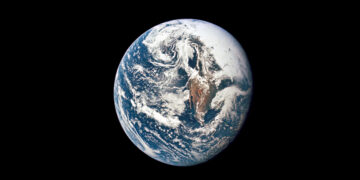A newly discovered asteroid, 2024 YR4, has raised concerns among astronomers due to its small but measurable chance of impacting Earth on December 22, 2032. While the probability of collision is only 1.3%, it has topped the ESA’s asteroid risk list, making it a subject of intense observation. Scientists are now tracking its trajectory, refining impact estimates, and considering potential planetary defense strategies.
Discovery and Characteristics of Asteroid 2024 YR4
Asteroids frequently pass near Earth, but very few have a measurable risk of impact. 2024 YR4 was first observed on December 27, 2024, by the Asteroid Terrestrial-impact Last Alert System (ATLAS) in Chile. NASA and ESA quickly confirmed the discovery and began tracking its orbit.
Key Facts About 2024 YR4
- Estimated Size: 40 to 100 meters (130–330 feet) across
- Closest Recorded Approach: December 25, 2024, at 500,000 miles (800,000 km) from Earth (twice the distance of the Moon)
- Potential Impact Date: December 22, 2032
- Current Impact Probability: 1.3% (98.7% chance it will miss Earth)
While an asteroid of this size wouldn’t cause global devastation, it could cause severe regional damage, similar to the Tunguska event of 1908, when an asteroid explosion flattened 2,000 square kilometers of forest in Siberia.
How Do Scientists Calculate Asteroid Impact Risks?
When an asteroid is first discovered, astronomers have limited data on its orbit, making early calculations uncertain. Over time, as more observations are made, scientists refine their models and predict the asteroid’s future path with greater accuracy.
NASA and ESA are currently analyzing archival sky survey data to check whether 2024 YR4 appeared in past images. Finding previous observations could help narrow down its orbit and confirm whether it will miss Earth completely.
Paul Chodas, director of NASA’s Center for Near-Earth Object Studies, explains:
“We are not worried at all, because of this 99 percent chance it will miss.”
Despite this, the asteroid remains at the top of ESA’s risk list due to the need for further observations.
What Would Happen If 2024 YR4 Hit Earth?
Potential Impact Scenarios
The effects of an asteroid impact depend on several factors, including size, speed, angle of entry, and impact location.
- Ocean Impact:
- Likely to cause tsunamis that could threaten coastal cities.
- Most of the impact energy would be absorbed by water, reducing destruction.
- Land Impact:
- Could flatten a large area, comparable to a nuclear explosion.
- Would create a crater several hundred meters wide, with shockwaves destroying structures over a vast region.
- Airburst Explosion (Similar to Tunguska Event):
- The asteroid could explode in the atmosphere, producing a shockwave that could destroy buildings over a wide area.
- If over a populated region, the destruction could be catastrophic.
While 2024 YR4 is unlikely to hit, scientists are considering potential defense strategies in case of future threats.
Tracking the Asteroid’s Path
NASA, ESA, and independent observatories are using powerful telescopes to track 2024 YR4. Over the next few months, astronomers will gather more precise orbital data to determine whether the asteroid remains a potential risk.
If 2024 YR4 disappears from view in mid-2025, it won’t be visible again until 2028, when it makes another close approach. By then, scientists should have enough data to confirm whether the risk has completely vanished or still needs monitoring.
Planetary Defense Strategies
NASA and ESA have been working on potential asteroid deflection strategies in case a future asteroid poses a real threat.
- NASA’s DART Mission (2022):
- Successfully altered the orbit of asteroid Dimorphos by crashing a spacecraft into it.
- Proved that we can change an asteroid’s trajectory with enough warning time.
- Other Proposed Methods:
- Gravity Tractors – A spacecraft would hover near an asteroid, using gravitational force to slowly change its path.
- Nuclear Explosions – A nuclear device could be used to deflect or break up an asteroid (last resort).
- Laser Ablation – High-powered lasers could heat the asteroid’s surface, causing gas to escape and altering its course.
These strategies are still in development, but the success of DART gives hope that asteroid deflection is possible.
Why Tracking Near-Earth Objects Is Important
Even though 2024 YR4 is unlikely to hit Earth, monitoring asteroids and comets is essential for future preparedness. Some key reasons include:
- Early Warning Systems:
- The sooner we detect an asteroid, the more time we have to calculate its trajectory and respond.
- Space Exploration and Scientific Understanding:
- Studying asteroids helps scientists understand the formation of the solar system.
- Preventing a Future Disaster:
- While extinction-level events are rare, regional destruction is a real possibility. The Tunguska event was caused by a similar-sized asteroid, and we must ensure we are ready for future threats.
Conclusion
Asteroid 2024 YR4 highlights the importance of planetary defense and asteroid monitoring. While its 1.3% impact probability is low, ongoing observations will refine its trajectory over the next few years.



















